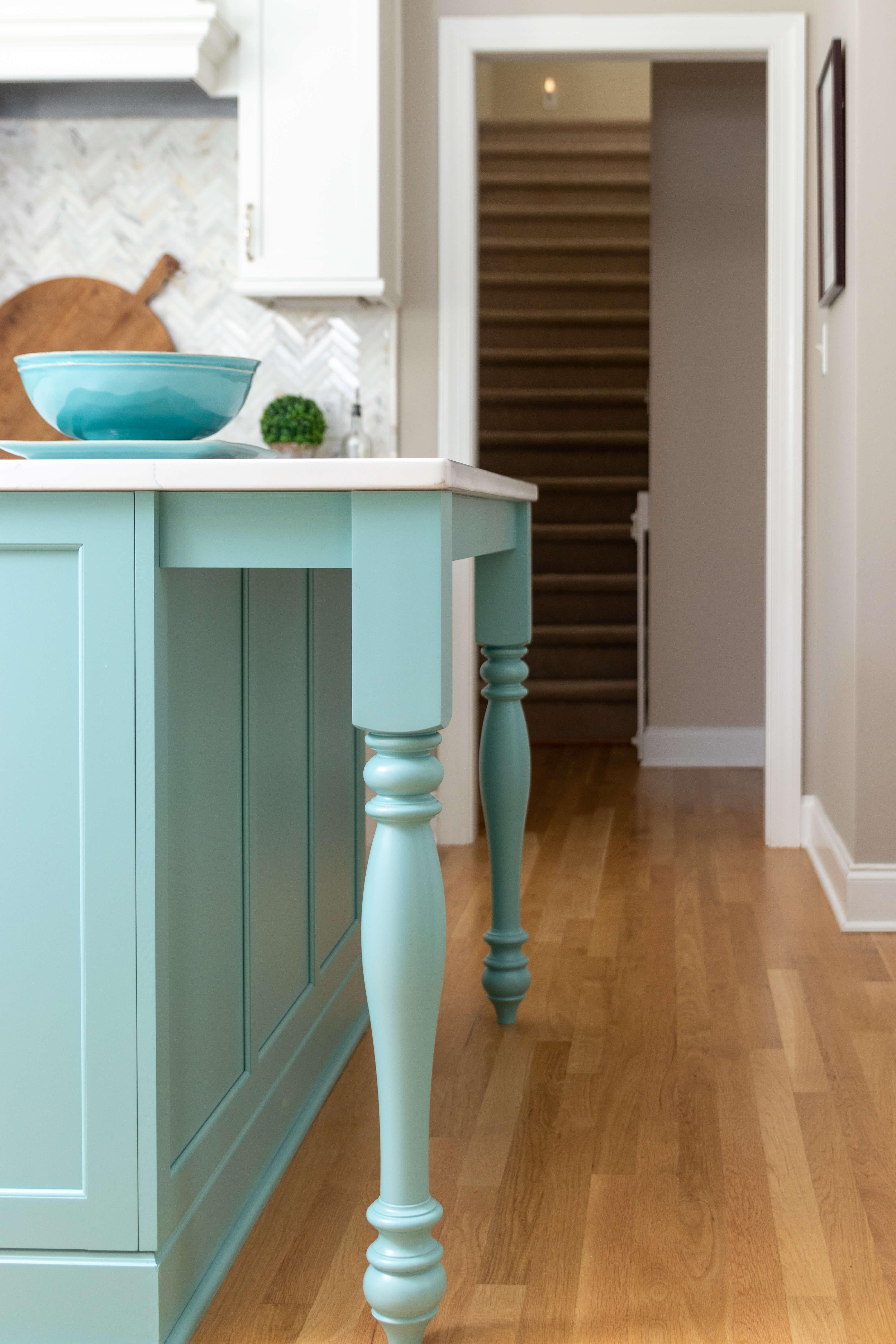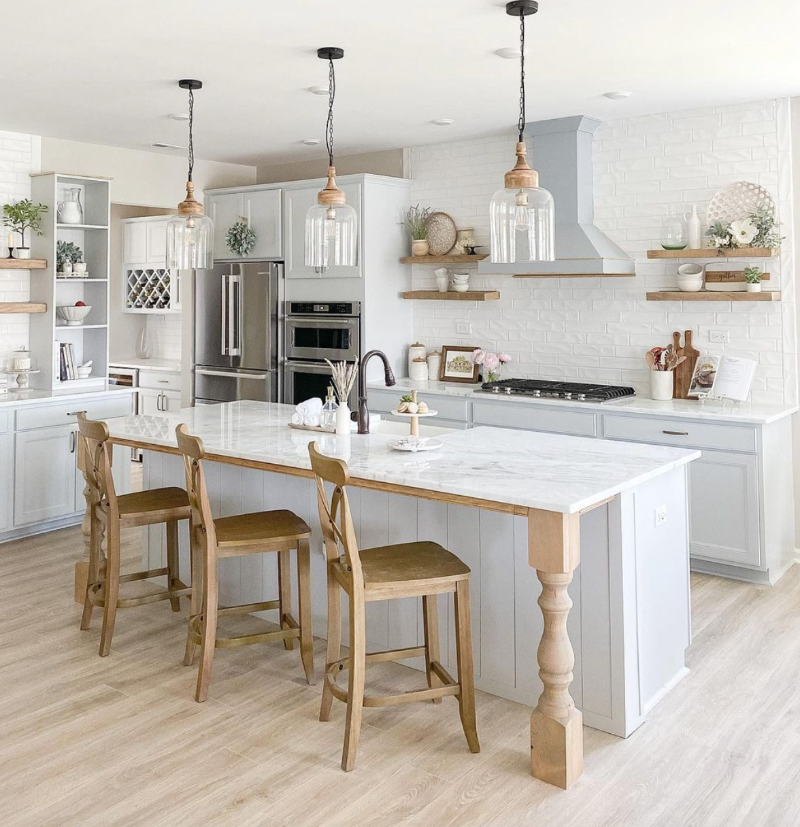Trendy Kitchen Island Legs: Raise Your Kitchen Layout
Wiki Article
An Overview to Choosing the Ideal Kitchen Island for Your Home
Picking the best kitchen island is a multi-faceted choice that can substantially impact both the capability and appearances of your home. Recognizing your cooking area's spatial dynamics is the preliminary action, making sure that the island fits effortlessly without disrupting the flow. Past room considerations, recognizing the key function of the island-- be it for dish preparation, dining, or added storage space-- is important. The choice of surfaces and products also plays a crucial role in integrating the island with your kitchen's general layout. As we explore these components even more, the subtleties of each decision will certainly become clear.Evaluating Your Area
Prior to picking a cooking area island, it is necessary to completely examine your area to ensure the addition will be both functional and cosmetically pleasing. Begin by gauging the readily available location, consisting of the size, size, and elevation of the kitchen area. Precise dimensions are critical to stay clear of purchasing an island that bewilders the area or one that is overmuch tiny.Take into consideration the existing format and just how the island will integrate with the existing web traffic flow. A well-placed island should not obstruct pathways or impede accessibility to vital appliances, such as the sink, range, and refrigerator. Leave ample clearance room-- commonly around 36 to 48 inches on all sides-- to enable comfortable movement and work space effectiveness.
Next, review the all-natural light and sightlines within your kitchen. An island that obstructs a window or interferes with aesthetic cohesion can make the area really feel dark and cramped. Believe about how the island's placement will certainly affect illumination and presence, ensuring it boosts instead of diminishes the kitchen's atmosphere.
Determining the Function
Determining the function of your cooking area island is an important step in ensuring it satisfies your specific requirements and choices. Before delving right into design or size factors to consider, it is vital to clarify what main function the island will offer in your kitchen. Will it be a central center for meal preparation, a laid-back eating location, or perhaps an extra storage space solution?For those who take pleasure in cooking, integrating devices such as a cooktop or sink might be required. In addition, ample counter area for slicing and mixing, along with easily accessible storage for cooking area devices and active ingredients, can transform the island into an effective workstation. On the other hand, if the island is intended to offer or promote social communications as an eating location, seating arrangements come to be vital. In this instance, making sure adequate legroom and area for comfortable eating experiences is essential.

Choosing the Right Dimension
Picking the appropriate dimension for your kitchen island is an equilibrium of functionality and space optimization. An optimal kitchen island must supply adequate work area while making certain that motion around the cooking area continues to be unimpeded. Begin by gauging your kitchen room; a minimal clearance of 36 to 42 inches around the island is needed to enable for comfortable movement and accessibility.The dimensions of the island must reflect its desired usage. For example, if the island will serve largely as a prep area, a width of 24 to 36 inches may be adequate. Nevertheless, if it is to suit seats, you need to consider a bigger dimension, typically determining at the very least 48 inches in width. Islands devoted to appliances or sinks may call for additional area to house these attributes properly.

Lastly, ensure that the island's dimension enhances the general kitchen layout, staying clear of any type of frustrating existence that might interfere with the kitchen area's visual and utility - kitchen island legs. Mindful look these up planning and specific measurements will aid you attain a unified and reliable kitchen environment
Picking Materials and Finishes
After identifying the appropriate size for your kitchen island, the next step involves choosing suitable materials and finishes. The choice of materials significantly impacts both the aesthetic appeal and functionality of your kitchen island. Popular materials for countertops include granite, butcher, and quartz block, each offering distinctive benefits.In addition to the kitchen counter, consider the products for the island base. Strong wood supplies a timeless, strong look, while stainless-steel supplies a smooth, modern look and is very easy to tidy. Painted finishes can present a dash of color, with options varying from low-key pastels to strong, dynamic shades.
Pay attention to the sturdiness of finishes, specifically in high-traffic areas, to maintain the island's appearance over time. Selecting the best materials and coatings will certainly enhance both the functionality and aesthetic allure of your kitchen island.
Integrating Functional Functions
Incorporating useful features right into your kitchen island can dramatically improve its energy and benefit, changing it into a functional focal point of your kitchen area. One necessary function to think about is extra storage space. Incorporating click here now closets, drawers, and open shelving can offer much-needed room for cookware, utensils, and small appliances, helping to preserve a clutter-free setting.Another useful enhancement is a built-in sink or cooktop, which can improve dish prep work and clean-up processes. A sink can assist in tasks such as washing vegetables and cleansing recipes, while a cooktop can permit cooking directly on the island, promoting an extra interactive and social cooking experience.
Think about including seating options, particularly if your kitchen increases as a casual eating location. Bar stools or built-in benches can change the island into a multifunctional space for meals, homework, or laid-back gatherings.
Finally, integrating electrical outlets into your kitchen area island can improve its functionality. Electrical outlets supply practical gain access to for little kitchen area home appliances, billing stations for electronic gadgets, and additional lighting options.
Conclusion

Prior to picking a cooking area island, it is vital to extensively evaluate your space to guarantee the addition will certainly be both useful and visually pleasing.Choosing the best dimension for your kitchen area kitchen island legs island is an equilibrium of functionality and space optimization. kitchen island legs. An ideal cooking area island need to supply enough office while making sure that movement around the kitchen area continues to be unblocked.Incorporating functional features right into your kitchen area island can dramatically improve its utility and benefit, changing it into a flexible centerpiece of your kitchen.In conclusion, selecting the perfect cooking area island demands a detailed analysis of the offered room, clarity regarding its key feature, and mindful consideration of the proper size and materials
Report this wiki page